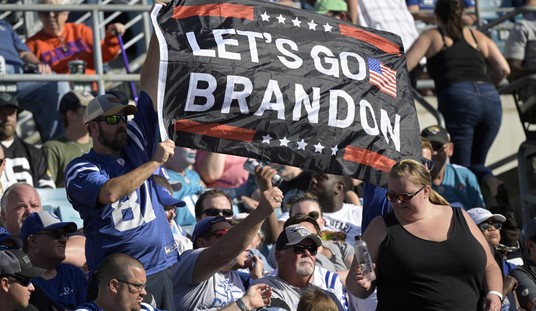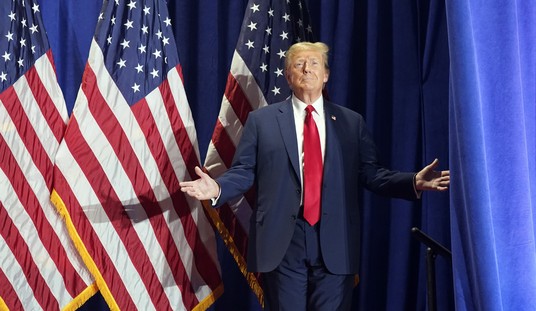President Trump is likely to name a new Federal Reserve chair over the next few days. Speculation is focused on current Fed governor Jay Powell and Stanford economist John Taylor. The list may be larger. It could still include Janet Yellen or Kevin Warsh. Trump is soliciting opinions and advice from people in and outside government. We will see soon enough.
Unfortunately, so much of the conversation about a new Fed leader is focused on who will be the high-interest-rate hawk or the low-interest-rate dove. But that’s not really the way we should be looking at it.
Here’s a point no one has discussed: the fate of the dollar.
Now, strictly speaking, dollar policy is the purview of the Treasury Department, which has the authority to intervene in exchange markets to buy or sell dollars. By the way, Congress also has a constitutional prerogative to set dollar value.
Years ago, during the 1990s, Democrat Robert Rubin was in charge of the Treasury, and he advocated a strong-dollar policy. And a couple of times, just in case markets didn’t believe him, he intervened to buy dollars to punctuate his policy.
But the Federal Reserve and its money-creating balance-sheet policies must work with the Treasury to execute dollar policies. In the long run, Treasury interventions don’t really have any clout. It’s the Fed that really counts.
And yet we don’t really know what dollar policies the Fed candidates favor.
So far as I know, Janet Yellen hardly ever mentions the dollar. Nor does Jay Powell, at least not in his very few public speeches.
Recommended
And while President Trump sometimes publicly favors a steady dollar, he sometimes warns that he does not want a particularly strong greenback.
But I think the best policy is a steady, sound, reliable King Dollar.
If you look at periods of dollar weakness, especially the 1970s but also the 2000s, a sinking dollar is usually associated with rising inflation, higher interest rates, and damage to the economy. In these circumstances, investors at home and abroad lose confidence and take their money elsewhere.
President George W. Bush’s pro-growth tax cuts were partly nullified by a sinking dollar. Yet when JFK and Ronald Reagan slashed marginal tax rates, they also favored a sound dollar. (I covered this at length with Brian Domitrovic in our book JFK and the Reagan Revolution.) Low taxes and a stable dollar was a winning combination that promoted economic growth without inflation.
There’s a lesson to be learned here. But we haven’t really seen any reference to the dollar from the Federal Reserve for many years. It seems not to be part of the Fed’s flawed and outdated economic models.
By the way, it’s not just the dollar exchange rate with other currencies. The value of our money should also be judged by forward-looking, inflation-sensitive market indicators, such as commodities, gold, and Treasury bond spreads.
Fed-chair possible Kevin Warsh has warned that the central bank should not rely on labor-market indicators to gauge future inflation. He instead advocates a market-based price rule. This is similar to the approach used by Reagan Fed appointees Wayne Angell, Robert Heller, and Manley Johnson -- and, for most of his term, Alan Greenspan.
And Fed-chair hopeful John Taylor is working on a study that argues for a return to a rules-based international currency system. Several years ago, Paul Volcker, who himself used gold and commodities as leading inflation indicators at the Fed, argued for a rules-based monetary policy at home and new international currency cooperation abroad.
So if President Trump gets his tax cuts and continues his regulatory rollbacks, the economy will return to its historic norm of 3 to 4 percent growth. And faster real growth will lead to higher real interest rates and a higher real-exchange-rate value for our money.
Already, as business anticipates much-needed tax cuts, the dollar is rising and gold is falling, as growth moves to 3 percent with minimal inflation.
This is a good thing. We’re not talking about a skyrocketing currency and interest rates, but important adjustments to pro-growth economic policies.
But we won’t get there without a stable dollar.
If the White House, Treasury, and Fed try to intervene for a weaker dollar, they will soon run into trouble. The tax cuts could be neutralized. Long dormant inflation may reappear. And interest rates will wind up going much higher than otherwise would be the case.
It’s a shame no one has directly asked the Fed candidates about the dollar. Because more people working successfully for higher wages in a strong-growth economy do not cause inflation, as Fed models unfortunately predict. But a sinking greenback will.
























Join the conversation as a VIP Member